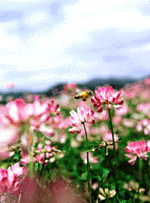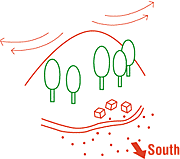3. The Ideal Bee Farm Should:
4. The Ideal Vegetation to Keep Honeybees.
Plants that provide honey and plants that provide pollen are called bee plants.
We have put together a list of the bee plants for each season that you can grow in your garden or in vacant lots. |
|
Spring
|
Speedwell (Veronica Persica), Japanese Apricot, Camellia, Eurya Japonica, Dandelion, Cherry Tree, Rapeseed, Pink Clover (Chinese Milk Vetch ), Black Acacia (Popular Acacia), Tangerine etc.
|
|
Summer
|
Persimmon, Chestnut, Horse Chestnut, Wax-Tree, Eggplant, Sunflower, Wild Mustard, Pepper Tree, Buckwheat etc.
|
|
Autumn
|
Cosmos, Clover, Arrowroot, Tall Goldenrod (Solidago altissima)
|
|
Winter
|
Loquat etc
|
|
 |
5. Sedentary Beekeeping and Migratory Beekeeping
|
Many people think that Beekeepers are a kind of 'Flower Gypsies' who moves around from north to south, chasing the flowers of the season. At present there are still a few beekeepers, who, after the pink clover ( Chinese milk vetch) season, move to the northeast or to Hokkaido to gather honey from the acacia, the horse chestnut, the linden tree, the clover etc. Because of living and education problems, as well as the fact that they are getting older, many beekeepers have moved to the cool highlands of the prefecture. There they spend the summer and keep their bees at the same place, or move them just a little.
|
|

![]()


